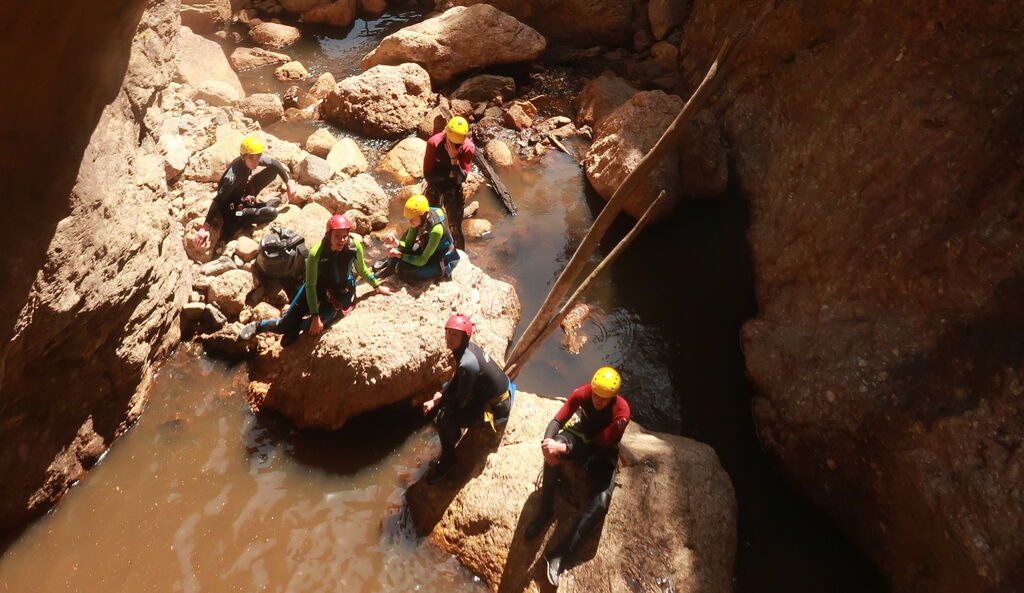11 June 2020
This experience is designed to offer a contrast to their Kakadu trip in Year 11, with a focus on food systems, conservation practices and the unique flora and fauna of Northern Tasmania.
The first stop was the 41° South Fish Farm, where owner Ziggy provided a fascinating insight into his unique and highly sustainable aquaculture business. The gravity-fed fish farm utilises the abundant fresh water from local river systems to provide perfect conditions for salmon farming, with wetlands created to clean the water; this illustrated to students how agricultural systems can be made more sustainable. Ziggy’s energy and positive approach to his work was a real highlight, and his explanation of how he set up a similar farm in Ghana to provide protein to areas with low food security inspired us all.
After lunch a visit to Mole Creek Caves provided students with the opportunity to learn about and meet the 2019 winner of Australian Cave Animal of the Year—the Tasmanian cave spider. The animal fun continued into the night with a memorable and informative Tasmanian devil feeding session at Cradle Mountain, which provided excellent examples of both threats to species and the way they have adapted over time. A sensational barbeque dinner and a celebration of Mr Quinn’s birthday topped off an amazing first day.
Day two provided students with opportunities to experience the incredible scenery of Cradle Mountain and the surrounding area. After a wild and rainy night there were rumours of snow falling at the peak of Cradle Mountain as Mr Quinn and Ms Hunt led off the intrepid group of bushwalkers to enjoy the stunning views found in the National Park. My group took on the challenge of canyoning through Mechanical Gorge, where the students were tested to their limits when abseiling down 20-metre sheer faces and leaping into the freezing waters of this mountain stream. After a windy 3-hour drive west to Strahan and delicious pizzas overlooking Macquarie Harbour, the group settled into their palatial cabins.
Our third day revolved around a cruise across magnificent Macquarie Harbour and the iconic Gordon River. The students had the chance to see close up the extensive aquaculture in the harbour, providing a marked contrast to that seen earlier in the trip. The boardwalk tour brought us to the magnificent Huon pines as the students learnt about their vital role in this forest ecosystem, along with the threats from forestry and energy generation. A brief trip to Sarah Island gave them the opportunity to learn about the rich convict history of this area and how it shaped the land.
The final morning offered students the chance to carry out some environmental fieldwork as we examined the impacts of mining on the landscapes and rivers around Queenstown. The Queen River is considered the most polluted river in Australia as a result of mining runoff, and students gathered data on oxygen levels, Ph and turbidity for comparison with river systems unaffected by mining. A Quinn masterclass on acid rain in the region finished off an incredible and educationally valuable 4 days in Tasmania.
I’d like to thank Mr Andrew Quinn and Ms Barbara Hunt for all their hard work on this fantastic trip.
Simon Miller
Head of Humanities



